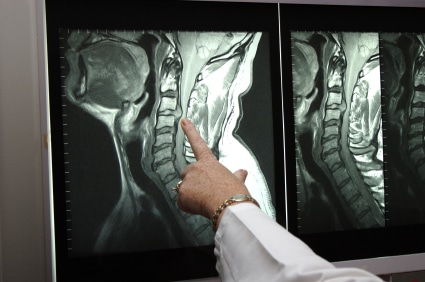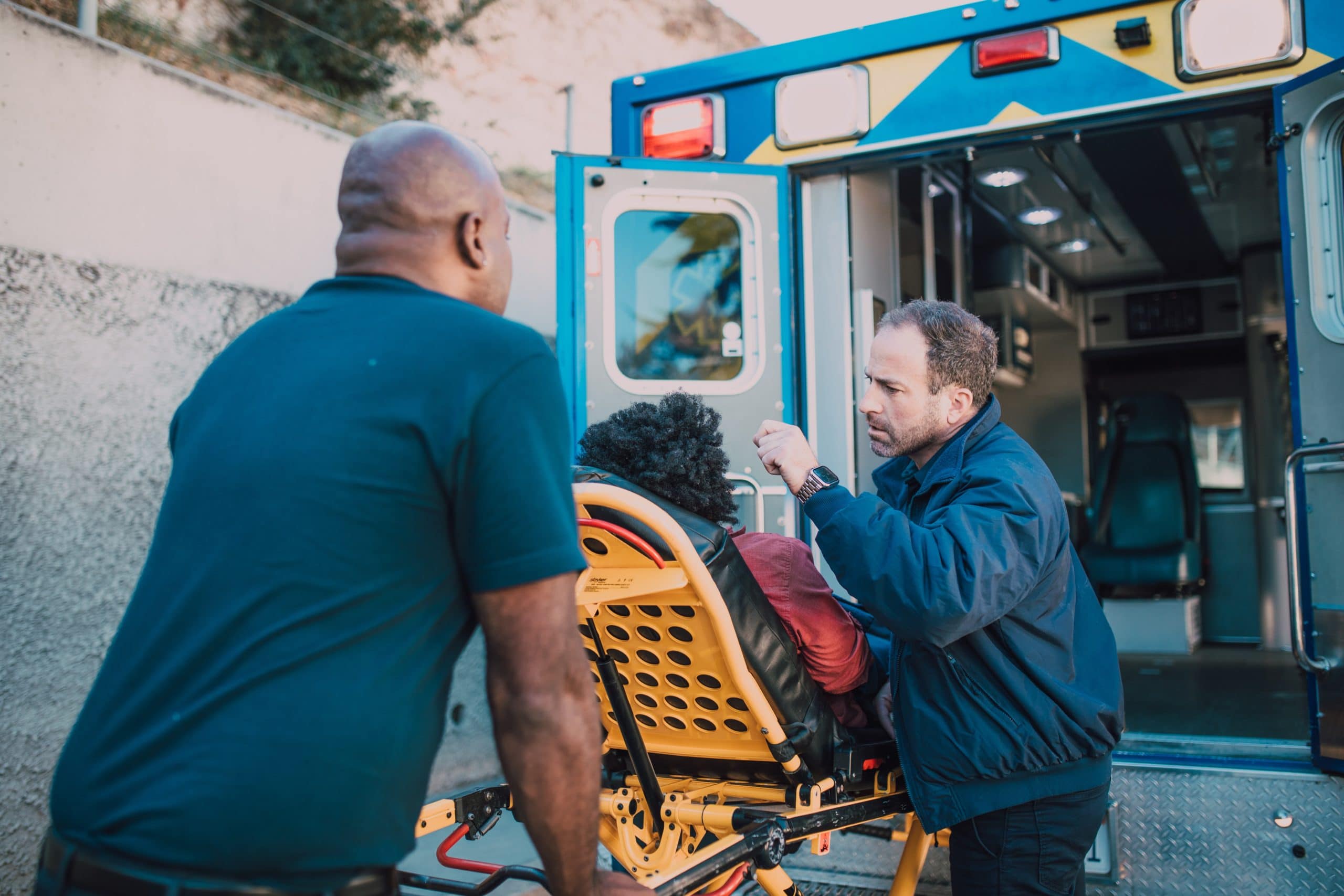What is a Lumbar Fracture?
A spinal fracture is a break in the bones of the spine, collectively known as vertebrae, which protect the spinal cord. While a spinal fracture can occur in anyone, it most commonly affects males between the ages of 18 and 25.

How serious can Lumbar Fractures be?
The most serious aspect of a fracture in the lumbar spine is the possibility of serious spinal cord or nerve damage. That’s why the initial response to these injuries needs to be to stabilize the fracture. This will later become necessary with bracing or surgery.
What are the most common causes of Lumbar Fractures?
Fractures of the lumbar spine often result from high-energy trauma, such as:
- High-speed car crashes
- Falls from great height
- Sports accidents/collisions
- Violent acts
In later age, fractures may be caused by the bone degradation of osteoporosis. These fractures can occur from something as innocuous as twisting or tripping and falling from a standing height.

What are the symptoms of a Lumbar Fracture?
A fracture of the lumbar spine causes moderate to severe back pain that is worsened with movement.
If the spinal cord or nerves are involved, the patient may experience bowel/bladder dysfunction along with numbness, tingling, or weakness in the limbs.
If the fracture has been caused by high-energy trauma, there is a good chance the patient may also have a brain injury and lose consciousness. Other injuries, known as distracting injuries, may have occurred simultaneously causing pain that overwhelms the back pain. In these instances, there still needs to be the assumption that the patient has a fractured vertebra, especially after a high-speed collision in a vehicle crash or in a sports event. Other symptoms of a spinal fracture may include paralysis, muscle spasms, or neck pain.
How is a Lumbar Fracture diagnosed?
To obtain a detailed view of your vertebrae, imaging tests are typically done; these tests may include x-ray, MRI, or CT scan. Treatment for a spinal fracture varies based on severity. Mild spinal fractures can often be treated with bracing and orthotics, while surgery may be necessary for more severe cases. Your doctor will develop a customized treatment plan based on your individual condition.
Will I be able to walk again if I have a Lumbar Fracture?
Although a broken back sounds horrifying, a broken lumbar vertebra can be successfully treated, whether that treatment is surgical or nonsurgical. If surgery is necessary, the training, skill, and experience of our four board-certified neurosurgeons at Texas Neurosurgery will ensure the best possible outcome.
Because there is so much variation between the types of these fractures and their causes, there is no way to predict outcomes. Having a lumbar fracture, however, does not in any way mean you will never be able to walk again.
Will I need Physical Therapy after a Lumbar Fracture?
With every sort of lumbar fracture, you can be assured that some amount of physical therapy will be necessary after you begin healing. Physical therapy in these cases is both rehabilitative and preventive (of future fractures).
For instance, if you’ve had a compression fracture due to osteoporosis, physical therapy would have the goal of strengthening the muscles and improving flexibility to prevent future fractures.
After a surgical procedure for a lumbar fracture, physical therapy will be necessary to regain strength, flexibility, and possibly to relearn certain movements.
Can a Lumbar Fracture heal on its own?
That depends on the type of fracture. Compression fractures happen where the front of the vertebra breaks and loses height while the back of the vertebra does not. This type of fracture is usually stable because the bones have not moved out of place, and they don’t typically endanger the spinal cord or the nerve roots. Compression fractures are the common fractures that occur with patients with bone loss due to osteoporosis. These fractures usually will heal on their own, as long as the vertebra hasn’t completely crushed.
The other types of fracture patterns that are the most common are flexion/distraction fractures, where the vertebra is pulled apart (as in a head-on car collision) or a fracture-dislocation, where the vertebra moves off the adjacent vertebra. These fractures have a good possibility of causing spinal cord and nerve damage. They will not heal on their own.
What can I do to help my Lumbar Fracture?
It’s likely that only compression fractures due to osteoporosis fall under this question. Most other lumbar fractures due to high-speed trauma will require medical attention to stabilize the area. From there, whether surgery is necessary will be the discussion. If bracing and possibly orthotics can work, those options will be explored, and you’ll need to carefully follow your instructions during healing.
As for more severe fractures, each case is different. We will give you a plan to ensure you keep as much stress off your fractured vertebra/vertebrae as possible.
What People Say About Us!
"Was able to see Dr Mayer very quickly. He is very kind and responsive. He explained options, had great bedside manner and was able to do surgery quickly. The surgery went very well and I was able to have pain relief almost immediately. I’d highly recommend Dr Mayer to anyone searching for a spine surgeon."
Schedule Your Lumbar Fracture Consult Today!
Reach out to Texas Neurosurgery, LLP to learn more about Lumbar Fractures or to schedule a diagnosis and treatment consult with one of our experienced providers. Call 214-823-2052 to reach out Dallas office. Our practice looks forward to serving you!

